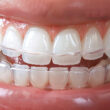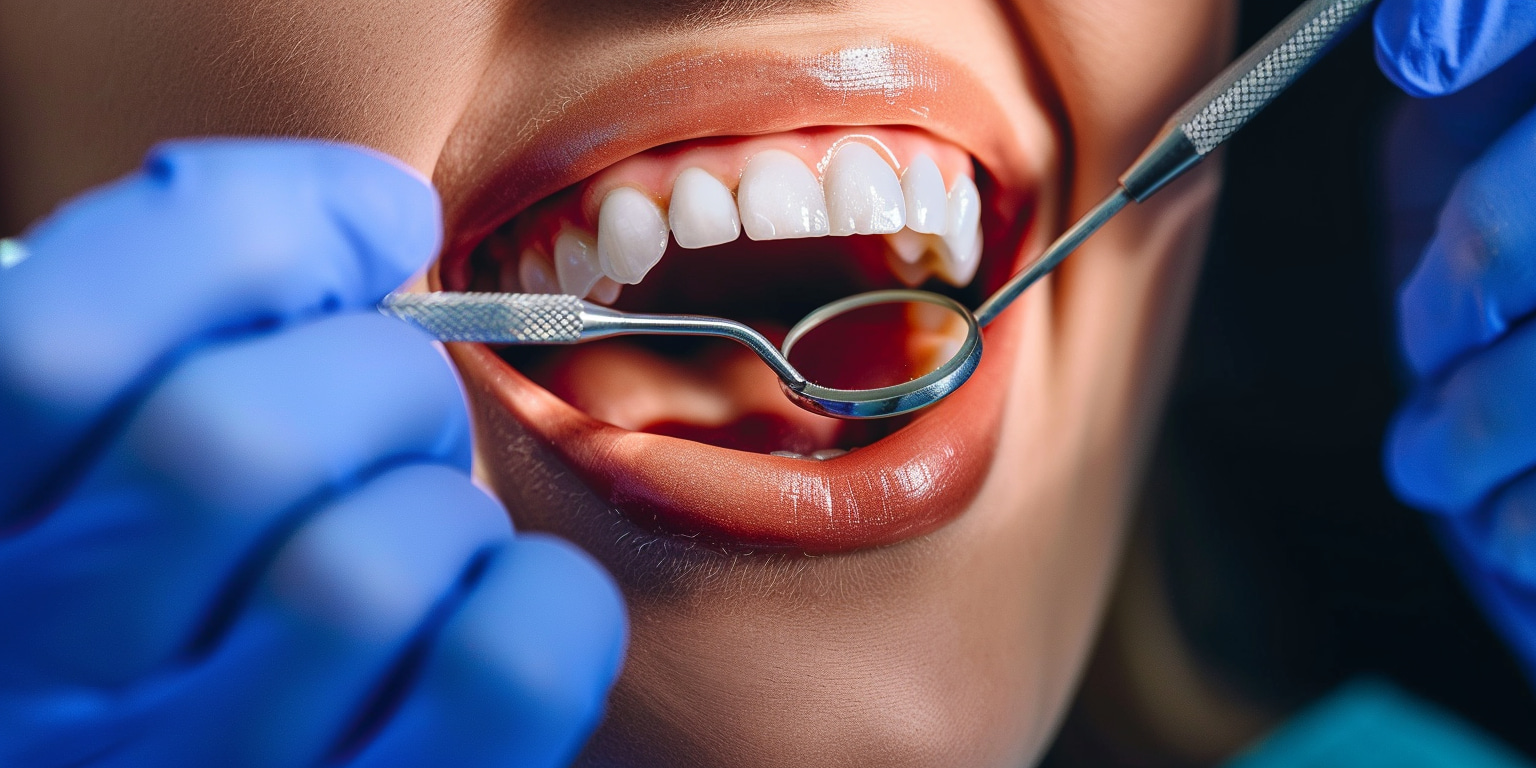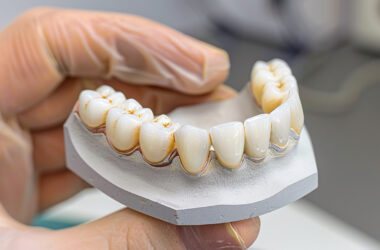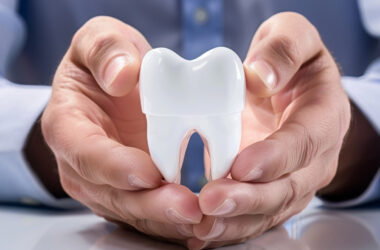Everyone loves a beautiful smile; it’s a turn-on. Importantly, everyone desires one. A beautiful smile is made up of eleven different elements, as listed in this blog post. A few are worth mentioning – the tooth color, the gum color, the gum display, the smile arc, the maxillary gum line, and the incisal edge.
Of these, the incisal edge stands out. According to the blog post referred to earlier, the incisal edge “is the edge of the upper teeth that you use to bite down when eating. Smiles are typically considered more attractive when this line is symmetrical and curves upward from the front teeth toward the molars in the back of your mouth.”
What this means is that teeth that are not symmetrically aligned will make a smile a faux pas. So, what causes dissymmetry in anyone’s dentition? There are many; it could be a chip or crack in one or several teeth or a gap between two or more teeth. Even a discoloration of several teeth takes away from the beauty of a smile.
Fortunately, the dental bonding procedure exists to fix every dissymmetry in anyone’s dentition.
Defined simply, dental bonding is a cosmetic procedure that uses a tooth-colored composite resin material to enhance your smile, according to this Cleveland Clinic blog post. With dental bonding, chips in teeth can be repaired, gaps in between teeth can be closed and the shape and color of a tooth or several teeth can be changed. Also, the procedure is completely reversible.
However, one pertinent question comes to mind: Is dental bonding covered by insurance? Unfortunately, there is no straightforward answer to the question. The key to answering the question lies in understanding the nuance between a dental procedure that is restorative and another that is cosmetic.
What is Dental Insurance?
Dental insurance is a specialized form of health insurance designed to offset costs associated with dental care. In the insurance marketplace, most dental insurance plans will cover cleanings, fillings, crown repairs, and any other procedure that will help the insured maintain oral health and function.
Dental insurance plans vary in costs and benefits, and most will provide coverage for preventive and restorative procedures, as listed above. However, most dental insurance plans will not provide coverage for cosmetic procedures.
Also read: How to Get Dental Implants Covered by Medical Insurance
When is Dental Bonding Covered by Insurance?
Restorative dentistry is primarily focused on improving the functional and structural aspects of the teeth, while cosmetic dentistry concerns itself with the appearance of the teeth. Clearly, the form and structure of dentition is more important than its look; hence, most dental insurance plans will provide basic coverage for the former and make coverage for the later optional.
Thus, when dental bonding is used for restorative purposes, such as the repair of a chipped tooth that makes chewing difficult and painful, the answer to the question “is dental bonding covered by insurance?” is a resounding “yes” In this instance, if there is a cavity that significantly weakens the structural integrity of a tooth, dental bonding can be applied to reinforce it and halt further deterioration. This is restorative dentistry, and the basic dental insurance plan provides coverage for it.
Do note that every insurance plan that covers restorative dentistry has specific details that vary from one plan or insurance service provider to another. Most will cover between 50% and 80% of the cost of the restorative procedure and also place caps on how many of such procedures the insured can access or materials used in the procedure.
If however, the intention of the insured is to access dental bonding for purely cosmetic purposes, then the answer to the question “is dental bonding covered by insurance?” is a definite “no.”
The reason is not farfetched; most cosmetic dental procedures are not for the purpose of addressing a functional or structural issue that is impacting on oral health. Instead, they are purely for improving “appearances”; which is not a medical necessity. In such a scenario, the insured is usually made to pay a premium or out-of-pocket to access cosmetic dentistry.
The Devil is in the Details
So, is dental bonding covered by insurance? The best way to determine that with certainty is to consult with your dental insurance provider. They should be provided with details of the type of bonding and the extent of repair you are considering. Make the purpose of the procedure you are considering very clear to your provider and make a case for its necessity.
They, in turn, will let you know what dental bonding benefits their coverage provides and whether or not you will pay more to access cosmetic dentistry.
Go-to questions you might want to ask your dental insurance provider include whether or not your plan covers dental bonding, what percentage of the cost of restorative procedures the plan covers, what limitations—in materials used and in number of accesses—exist on the plan, and whether or not you require prior approval for bonding treatments.
Going Beyond Dental Insurance
Since most dental insurance plans don’t cover the cost of cosmetic dentistry, it might be a good idea to look beyond what these insurance plans offer. For example, would it be expedient to take out a payment plan with a dental office and go ahead with the procedure anyway?
Such a plan makes it possible for you to split the payment for the procedure into smaller monthly installments, making the procedure more affordable. And then there are third-party care providers like CareCredit who will give you a low interest rate dental credit card to access this kind of procedure. These cards have lower interest rates when compared with their traditional counterparts.
Another option would be to consider what bonding materials to be used for cosmetic dentistry. Basically, two types of dental bonding materials are used: porcelain and composite resin. Porcelain material is more durable, resistant to stain, irreversible, and expensive; while composite resin is not as strong and more affordable.
Typically, the former would last for upwards of ten years, while the latter would require replacing every five years or thereabouts. Do note that you should also consider the location of the bonding to be done and the extent of damage to your dentition when considering what material to use. Balance these factors against the cost for the best outcomes.
A third option would be to consider alternative cosmetic dentistry. Several of such alternate cosmetic procedures exist; such as veneering, teeth whitening, and orthodontics.
Veneering will layer your real teeth with a thin sheet of porcelain or composite resin, thus addressing concerns that border around chips, cracks, or discoloration.
Teeth whitening improves the overall appearance of a smile, while orthodontics involves the implantation of braces or clear aligners to help tackle tooth misalignment and/or crowding.
As always, take time to discuss the options you are considering with your dentist.
How About Some Preventive Dentistry?
It’s always a good idea to go back to first principles in matters of oral hygiene. Dental routines like brushing twice a day with a soft-bristled toothbrush and fluoride toothpaste, flossing regularly after meals, having regular dental checks, and eating less of unsavory foods like hard, sticky, or sugary foods will help mitigate the onset of dental deterioration that results in the need for dental bonding.
Conclusion
Having a clear understanding of the difference between restorative and cosmetic dental bonding is key to answering the question, “is dental bonding covered by insurance?”
Remember that your dental insurance plan is most likely limiting how much and what type of dentistry coverage you can access, so always approach them for clarifications whenever you feel quite confused about your options.
It is also important that you weigh the potential cost against the benefit of any dental bonding you intend to do, especially if it is purely for cosmetic purposes. Improving your smile and self-confidence is important, but your financial health is also important.
Lastly, always maintain good oral hygiene and consult fairly regularly with a qualified Dentist.
We strongly encourage you to schedule a consultation with your dentists to discuss your specific situation and explore all available options. They can guide you through the insurance process, recommend financing solutions, and create a personalized treatment plan to restore your oral health and confidence.









